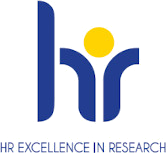Mathematical Forum is a series of talks
organized approximately once per semester.
The primary aim of the forum is to overcome the gaps between various research areas studied in
the School of Mathematics. The selected speakers present their research in a manner accessible to the
entire School of Mathematics. Additionally, the forum serves as a venue for people from different
departments to meet and socialize during post-lecture refreshments.
For questions, please contact the organizers V. Dolejsi, S. Hencl, V. Kala.
| 30. 4.2025 |
Abstract:
Non-autonomous linear ordinary differential equations (ODE) play a fundamental
role in various scientific and engineering applications, including nuclear
magnetic resonance (NMR) spectroscopy. In this talk, we will introduce
step-by-step an entirely new way to express the ODE solution based on a generalized Volterra composition: the ⋆-product. This formulation transforms
the original differential problem into a linear problem within a specific
algebra of distributions. The proposed approach offers deeper theoretical
insights and enables the development of efficient numerical methods for solving
systems of linear non-autonomous ODEs, e.g., in NMR applications. Moreover,
ongoing work shows that this methodology can be extended to partial
differential equations and fractional differential equations.
|
| [+] photo
|
| 4.12.2024 |
Abstract:
Nonparametric statistics aims to design statistical methods without specifying assumptions on the data-generating process. For one-dimensional data, such methods are based on the ranks, quantiles, and data ordering. For multivariate or more complex data, however, ranks or quantiles cannot be defined directly, as the data cannot be naturally ordered - how do you define a median for bivariate observations?
Depth functions introduce ordering in multivariate spaces in a data-dependent way. The points are ranked according to their "centrality" inside the dataset. We will discuss seminal data depths, and show that they are equivalent to well-established methods developed in geometry, some 150 years earlier. These unknown pairings allow us to resolve open questions in depth research, but also shed new light on old geometric problems.
|
| [+] photo
|
| 19.3.2024 |
Abstract: A complex number is called algebraic if it is the root of some polynomial with integer coefficients. Starting with efforts to solve Diophantine equations, extensions of the rational numbers by several algebraic numbers (ie, smallest fields that contain all of them) have been widely studied throughout algebra and number theory. I will focus on the more mysterious case of extensions by infinitely many numbers. Specifically, I will discuss
- how to measure the size of an algebraic number,
- how many "small" algebraic numbers does a given extension have, and
- the connections to logic and number theory (including a recent joint
result with Nicolas Daans and Siu Hang Man).
|
| [+] photo
|
| 12.12.2023 |
Abstract:
In this talks we study mappings that could serve as defomations in models on
Nonlinear Elasticity. We have a body Omega in Rn and we have a mapping f from Omega to Rn that describes the deformation of
this body.
Natural questions considered are when the mapping is continuous
(the material does not break during the deformation), when is it invertible (no
„interpenetration of matter“ happens) or when does it map sets of zero
volume to sets of zero volume (no material is created or lost during our
deformation). In particular we will study when the deformation does not change
orientation (you cannot map your right hand to your left hand) or when can we
approximate injective mappings by piecewise linear (or smooth) injective
mappings.
|
| [+] photo
|






